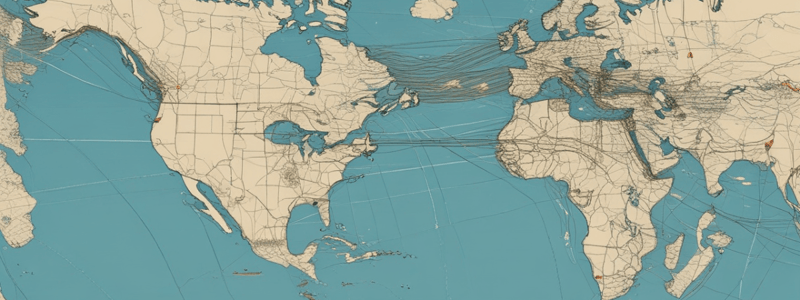Podcast
Questions and Answers
What is required at the start or end of an IFR route?
What is required at the start or end of an IFR route?
- Weather conditions must be clear
- Aircraft must file a pre-flight plan
- Only visual flight rules apply
- Navigation aids must be available (correct)
How does Air Traffic Control determine your position?
How does Air Traffic Control determine your position?
- From flight plans alone
- By visual observation from the tower
- Using a transponder (correct)
- Through radio communication only
What weather phenomenon can occur on a clear sky night with light winds and a close dew point?
What weather phenomenon can occur on a clear sky night with light winds and a close dew point?
- Hailstorms
- Tornadoes
- Radiation fog (correct)
- Thunderstorms
What causes low-level jet (LLJ) formation according to the GFA?
What causes low-level jet (LLJ) formation according to the GFA?
When will the indicated altitude be lower than the actual altitude?
When will the indicated altitude be lower than the actual altitude?
Why is there fog overseas but not on the ground? 
Why is there fog overseas but not on the ground? 
Flashcards are hidden until you start studying
Study Notes
IFR Preferred Route
- IFR routes require navigation aids either at the start or end, ensuring pilots have necessary reference points.
ATC Position Tracking
- Air Traffic Control (ATC) utilizes transponders to determine the aircraft's position in real-time.
Weather Conditions at Night
- Under clear night skies with light winds and dew points close to the temperature, radiation fog can form, potentially reducing visibility to zero.
Low-Level Jet (LLJ) Development
- A Low-Level Jet occurs when low pressure is obstructed by a high-pressure system, leading to significant wind patterns.
Fog Formation
- Fog can form over the sea but not on land due to warm, moist air rising into cooler air aloft, often aided by offshore winds.
Altitude Discrepancies
- Indicated altitude appears lower than actual altitude when the ambient temperature exceeds standard temperature conditions.
Thunderstorm Avoidance
- When encountering a thunderstorm while flying, it is advised to avoid turning left to circumvent it; turning upwind is preferred for safety.
Studying That Suits You
Use AI to generate personalized quizzes and flashcards to suit your learning preferences.




